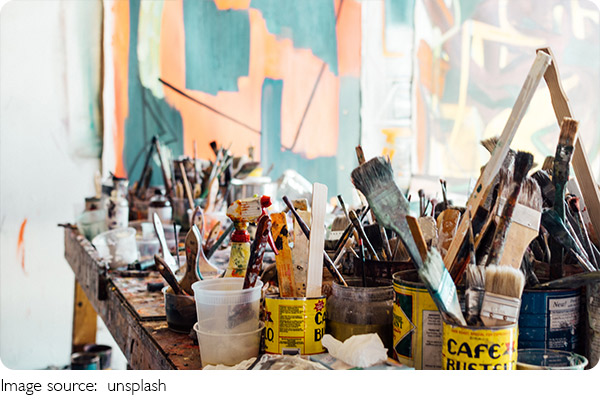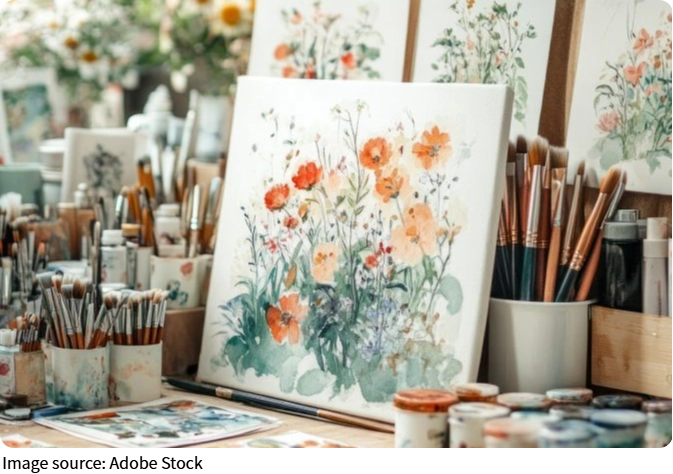Emotion Through Art

When we look at a piece of art—whether it's a painting, a sketch, or a sculpture—we often see more than just colors or shapes. We feel something. That's the magic of art.
It's a visual language that can express what words sometimes can't. And the best part? We don't need to be professional artists to use it. All of us, with a pen, brush, or even our fingers, can turn our feelings into something visual.
Why do we turn to art?
There are times when our emotions are hard to explain. Maybe we feel anxious, joyful, confused, or deeply inspired. Art gives us a space to process and reflect. By drawing, painting, or creating, we can release inner thoughts and find calm.
It's like keeping a visual diary—one that records not just events but how we felt in those moments. That's why art therapy exists. It's used to help people manage stress, trauma, or simply to reconnect with themselves.
Color speaks louder than we think
One of the easiest ways we express emotions in art is through color. Think about how red can feel intense or angry, blue can feel calm or sad, and yellow can bring out joy. We don't always choose colors on purpose—they often reflect how we feel inside.
For example, if we're feeling peaceful, we might naturally reach for soft tones like pastels or cool blues. If we're feeling energetic or overwhelmed, we might pick bold colors or even mix them in chaotic ways. The way we use color becomes a reflection of our mood.
Shapes, lines, and textures matter too
It's not just about color. The lines we draw—their direction, speed, and strength—can say a lot. Smooth, flowing lines often feel calm. Sharp, jagged ones can feel tense or angry.
Texture adds another layer. A rough surface might show discomfort or struggle, while a smooth one can feel gentle and peaceful. Even the way we press a pencil or brush—hard or light—says something about our emotional state.
Art as a message, not just a picture
Some of the most famous artworks in history weren't made to look pretty—they were made to say something. Artists have used their craft to talk about love, loss, identity, hope, and even protest.
We can do the same. Whether we draw a scene, a symbol, or an abstract pattern, we're sending a message. That message doesn't need to be clear to others—as long as it means something to us, it's powerful.
We don't need to be "good" at art
One of the biggest myths is that only talented people can express emotions through art. That's not true at all. Expressing feelings through art is not about skill—it's about honesty. Scribbles, splashes, collages, doodles—these are all valid ways to communicate.
Sometimes, the rawest, messiest pieces are the most emotional. The goal isn't to impress others, but to express ourselves. Once we let go of the idea of "perfect art," we start creating freely and meaningfully.
How to start expressing through art
Here are a few ideas if we want to try:
• Mood drawing: Pick a color that matches how you feel today, then draw with it freely. No need to plan—just let it flow.
• Symbol sketching: Think of a symbol that represents your current thoughts—a storm, a tree, a wave—and draw it in your own way.
• Memory painting: Try painting a memory that's stuck with you. Use colors and shapes to show how it felt, not how it looked.
These small exercises can help us understand ourselves better—and create something deeply personal in the process.

Let's turn emotions into art
At its core, art is about connection—with ourselves, with others, and with the world. It lets us show what's on our mind without saying a word. Whether we use a sketchbook, a digital tablet, or even a napkin at a café, the act of creating gives our feelings space to breathe.
So Lykkers, have you ever made a piece of art that helped you feel better or say something you couldn't put into words? We'd love to hear your story—or even see what you've created. Let's turn emotion into inspiration, one brushstroke at a time.
-
 Oil vs WatercolorWhich painting style truly captures your soul? Let's compare oil and watercolor—techniques, charm, and why artists love both!
Oil vs WatercolorWhich painting style truly captures your soul? Let's compare oil and watercolor—techniques, charm, and why artists love both! -
 Pop Music JourneyEver wondered how your favorite pop song is made? From lyrics to beats—here's the full story behind the scenes!
Pop Music JourneyEver wondered how your favorite pop song is made? From lyrics to beats—here's the full story behind the scenes! -
 Healing Through MusicCan a single song really lift your mood? These comforting tracks might be just what your heart needs today!
Healing Through MusicCan a single song really lift your mood? These comforting tracks might be just what your heart needs today!